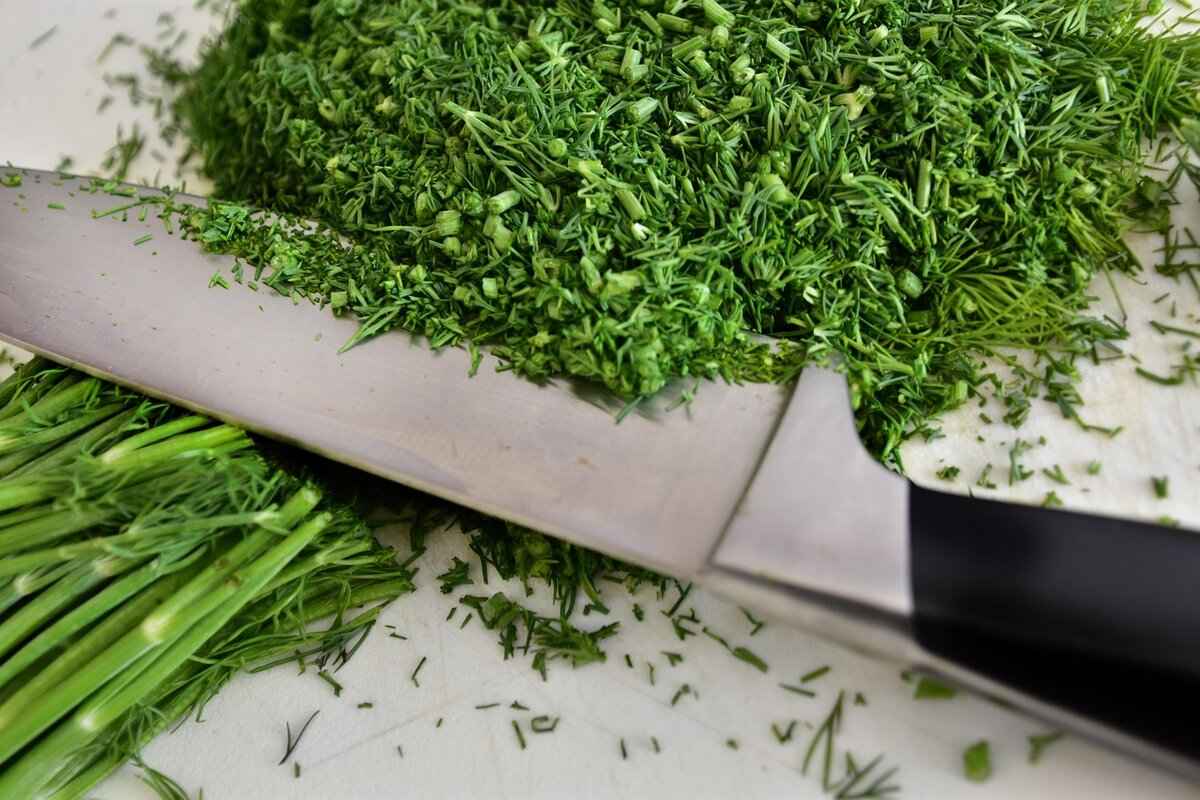Street food is more than just a meal; it’s a cultural experience that brings people together. This guide delves into the vibrant world of street food cooking classes across Asia, showcasing popular destinations, essential culinary skills, and cultural insights that will elevate your cooking journey.
Street food cooking classes provide a unique opportunity to immerse yourself in local cultures while mastering the art of preparing authentic dishes. Unlike traditional culinary schools, these classes offer hands-on experiences that connect you directly with the heart of the cuisine. You’ll not only learn to cook but also understand the stories and traditions behind each dish.
Asia boasts a plethora of cities celebrated for their street food. Here are some top destinations where you can find exciting cooking classes tailored to all skill levels:
- Bangkok: Known as the culinary capital of Thailand, Bangkok’s street food scene is vibrant and diverse. Here, you can learn to craft iconic dishes like Pad Thai and Tom Yum from local chefs.
- Hanoi: The heart of Vietnamese cuisine, Hanoi offers immersive cooking classes where you can master dishes like Pho and Banh Mi. Engaging with local chefs provides authentic insights into Vietnamese culinary traditions.
- Singapore: Famous for its hawker centers, Singapore is a melting pot of flavors. Cooking classes here often include a mix of Malay, Chinese, and Indian cuisines, allowing you to explore a variety of dishes.
Participating in street food cooking classes equips you with invaluable skills:
- Knife Skills and Ingredient Preparation: Mastering knife skills is essential in street food cooking. Proper preparation of ingredients significantly affects the flavor and presentation of your dishes.
- Cooking Techniques Unique to Street Food: Quick cooking methods such as stir-frying and grilling are staples in street food preparation. Understanding these techniques will help you recreate authentic flavors at home.
Before enrolling, it’s important to know what to expect from a street food cooking class:
- Hands-On Cooking Experience: Most classes emphasize practical, hands-on learning. This interactive approach not only enhances your skills but also makes the experience enjoyable.
- Market Tours and Ingredient Sourcing: Many classes include visits to local markets, where you’ll learn about sourcing fresh ingredients. This knowledge is crucial for elevating your cooking.
With numerous options available, selecting the right street food cooking class can be daunting. Here are some tips:
- Researching Instructor Credentials: The expertise of your instructor can greatly impact your experience. Look for instructors with a strong culinary background and positive reviews.
- Reading Reviews and Testimonials: Feedback from previous participants can provide valuable insights into the quality of the class. Pay attention to aspects like teaching style and class structure.
Engaging in street food cooking classes fosters a deeper appreciation for local cultures:
- Connecting with Local Communities: These classes often involve direct interaction with local chefs and vendors. This connection enriches your travel experience and promotes cultural exchange.
- Learning the Stories Behind the Dishes: Every dish has a rich history. Cooking classes provide insights into the significance of various street foods, enhancing your culinary knowledge.
By participating in street food cooking classes, you not only enhance your culinary skills but also create lasting memories and connections with the culture. So, pack your bags and get ready for a delicious journey through Asia’s street food scene!

Why Choose Street Food Cooking Classes?
Street food cooking classes present an exciting way to dive into the heart of local cultures while mastering the art of preparing authentic dishes. These classes not only teach you how to cook but also offer a unique perspective on the traditions and flavors that define a region. Here, we explore the compelling reasons to choose street food cooking classes over traditional culinary schools.
Unlike conventional culinary education, street food cooking classes focus on practical skills that are directly applicable in everyday cooking. These classes are often held in bustling markets or local kitchens, providing an immersive experience that goes beyond mere cooking techniques. You’ll learn to navigate the vibrant atmosphere of street food stalls, gaining hands-on experience that is both practical and enjoyable.
One of the most significant advantages of street food cooking classes is the opportunity to engage with local chefs and vendors. This interaction fosters a deeper understanding of the cultural significance behind each dish. For example, you might learn about the history of a recipe or the traditional methods used to prepare it, enriching your culinary knowledge while also enhancing your travel experience.
Street food cooking emphasizes techniques that are often not covered in traditional culinary schools. You’ll gain hands-on experience in methods such as:
- Stir-frying – A quick and efficient cooking technique that maximizes flavor.
- Grilling – Learn how to achieve the perfect char and smoky flavor.
- Ingredient sourcing – Understand the importance of fresh, local ingredients and how they impact flavor.
Most street food cooking classes prioritize hands-on learning, allowing you to practice what you learn immediately. This interactive approach not only enhances your cooking skills but also boosts your confidence in the kitchen. You’ll leave the class not just with recipes, but with the ability to recreate the dishes at home.
Many street food cooking classes include market tours, where you can explore local produce and spices. This experience is invaluable as it teaches you how to select the best ingredients for your dishes. Understanding where to find fresh, high-quality ingredients can significantly elevate your cooking.
Street food cooking classes are often more affordable than traditional culinary schools. They cater to all skill levels, making them accessible to anyone interested in cooking. Whether you’re a beginner or a seasoned cook looking to expand your repertoire, you’ll find a class that suits your needs.
Participating in street food cooking classes allows you to build connections with local communities. These relationships not only enrich your travel experience but also promote cultural exchange. By learning from local chefs, you gain insights into their culinary practices and the stories behind their dishes.
In summary, street food cooking classes offer a unique blend of cultural immersion and culinary education. They provide practical skills, a deeper understanding of local traditions, and an engaging way to connect with communities. By choosing these classes, you embark on a culinary journey that is both enriching and memorable.

Top Destinations for Street Food Cooking Classes
Asia is a treasure trove of culinary delights, particularly when it comes to street food. The bustling markets and vibrant stalls offer a unique glimpse into the region’s diverse cultures and traditions. For those looking to dive deeper, street food cooking classes provide an exciting opportunity to learn how to prepare these iconic dishes. Below is an exploration of some of the top destinations across Asia where you can enhance your culinary skills while indulging in the rich flavors of local cuisine.
- Bangkok, Thailand
Known as the culinary capital of Thailand, Bangkok is a haven for street food enthusiasts. Here, you can find numerous cooking classes that teach you how to prepare famous dishes like Pad Thai and Tom Yum. Many classes also include a tour of local markets, allowing you to source fresh ingredients and learn about their significance in Thai cuisine.
- Hanoi, Vietnam
Hanoi is the heart of Vietnamese cuisine, and its street food cooking classes are a must for any culinary traveler. In these classes, you can learn to create traditional dishes such as Pho and Banh Mi from experienced local chefs. The immersive experience often includes insights into the cultural history behind each dish.
- Tokyo, Japan
Tokyo offers a unique twist on street food with its blend of traditional and modern culinary practices. Cooking classes here often focus on street-style sushi and ramen. Participants can expect to learn not only the techniques but also the art of presentation, which is integral to Japanese cuisine.
- Penang, Malaysia
Renowned for its diverse food culture, Penang is a melting pot of flavors. Cooking classes in this city often cover a variety of dishes influenced by Malay, Chinese, and Indian cuisines. You can learn to make classics like Nasi Kandar and Char Kway Teow, all while enjoying the vibrant atmosphere of the local food scene.
- Seoul, South Korea
Seoul’s street food classes offer an exciting opportunity to delve into Korean cuisine. Learn to make popular dishes such as Bibimbap and Tteokbokki while exploring the bustling street markets. Many classes also emphasize the importance of fermentation in Korean cooking, introducing participants to the world of Kimchi.
These cities not only offer cooking classes but also provide a deeper understanding of the cultural significance of street food. By participating in these classes, you can connect with local chefs and vendors, enriching your travel experience and fostering a greater appreciation for the culinary arts.
Whether you’re a novice cook or an experienced chef, street food cooking classes in Asia cater to all skill levels. The hands-on experience, coupled with the vibrant atmosphere of local markets, makes for an unforgettable culinary journey. So pack your bags, grab your apron, and get ready to explore the exciting world of street food in Asia!
Bangkok: The Culinary Capital of Thailand
Bangkok, often hailed as the culinary capital of Thailand, is a city that tantalizes the senses with its vibrant street food scene. The bustling streets are lined with food vendors, each offering a unique array of dishes that reflect the rich culture and history of Thailand. From the aromatic spices of Tom Yum soup to the sweet and savory flavors of Pad Thai, the city’s culinary offerings are as diverse as they are delicious.
Participating in a cooking class in Bangkok is not just about learning how to cook; it’s an immersive experience that allows you to delve into the heart of Thai cuisine. These classes often take place in local markets, where you can learn about fresh ingredients and traditional cooking techniques directly from local chefs. This hands-on approach not only enhances your cooking skills but also deepens your understanding of Thai culture.
- Pad Thai: This world-famous stir-fried noodle dish is a staple of Thai cuisine. In a cooking class, you will learn the secrets to achieving the perfect balance of flavors with tamarind, fish sauce, and lime.
- Tom Yum: Known for its bold flavors, this hot and sour soup is a must-try. Classes often teach you how to balance the heat of chili with the freshness of herbs like lemongrass and kaffir lime leaves.
- Green Curry: This dish is a favorite among locals and visitors alike. You will discover how to create a rich and creamy curry paste using fresh ingredients, which is the heart of this dish.
Most cooking classes in Bangkok are designed to be interactive and engaging. You can expect to participate in:
- Market Tours: Many classes start with a visit to a local market, where you’ll learn about selecting the best ingredients.
- Hands-On Cooking: After gathering ingredients, you’ll dive right into cooking, guided by experienced chefs who share tips and techniques.
- Tasting Sessions: Enjoying the fruits of your labor is a highlight. You’ll have the opportunity to taste your creations and often share them with fellow participants.
Taking a cooking class in Bangkok not only teaches you how to prepare traditional dishes but also equips you with essential culinary skills. You’ll learn:
- Knife Skills: Proper knife techniques are crucial in Thai cooking. You’ll practice how to chop, slice, and dice ingredients efficiently.
- Cooking Techniques: Understanding various cooking methods such as stir-frying, steaming, and grilling will enhance your overall cooking repertoire.
Cooking classes in Bangkok serve as a bridge to the local culture. Engaging with chefs and learning about their culinary heritage fosters a deeper appreciation for Thai traditions. Each dish tells a story, reflecting the history and cultural significance behind it.
Moreover, by participating in these classes, you contribute to the local economy and support small businesses, promoting cultural exchange and understanding.
In summary, Bangkok’s vibrant street food scene offers a unique opportunity to learn and experience Thai cuisine in an authentic setting. Whether you’re a novice cook or an experienced chef, taking a cooking class in this culinary capital will enrich your culinary skills and cultural knowledge, making your visit to Thailand truly unforgettable.
Hanoi: The Heart of Vietnamese Cuisine
Hanoi, the bustling capital of Vietnam, is a city that pulses with life, culture, and, most importantly, food. Renowned as the heart of Vietnamese cuisine, Hanoi’s streets are lined with vendors offering a myriad of delectable dishes. Among these culinary treasures, street food cooking classes stand out as an exceptional way to delve into the rich flavors and traditions of Vietnamese cooking.
What makes Hanoi’s street food classes truly unique is their immersive nature. Participants not only learn to cook iconic dishes such as Pho and Banh Mi but also gain insights into the cultural significance behind each recipe. Local chefs, often with years of experience, guide students through the intricate process of preparing these beloved dishes, ensuring that every participant leaves with both skill and knowledge.
- Authenticity: Learn from local chefs who have mastered the art of Vietnamese cooking.
- Hands-On Experience: Engage in a practical cooking environment that encourages interaction and skill development.
- Cultural Insights: Discover the stories and traditions that shape Vietnamese cuisine.
In a typical class, participants start with a market tour, where they explore local markets filled with fresh ingredients. This experience is invaluable as it teaches you how to select the best produce, a skill that is crucial for creating authentic dishes. After sourcing the ingredients, the real fun begins in the kitchen. Here, you will learn the art of making Pho, the famous Vietnamese noodle soup, which is a harmonious blend of broth, herbs, and meat, and Banh Mi, a delightful sandwich that combines French and Vietnamese flavors.
Street food cooking classes in Hanoi focus on essential cooking techniques that are fundamental to Vietnamese cuisine. You will master knife skills, which are crucial for preparing ingredients efficiently and safely. Additionally, you will learn various cooking methods, such as stir-frying and grilling, that are commonly used in street food preparation.
Moreover, these classes emphasize the importance of flavor balancing, teaching you how to combine sweet, sour, salty, and spicy elements to create mouth-watering dishes. By the end of the class, you will not only be able to replicate these recipes at home but also understand the principles behind them, allowing you to experiment and create your own variations.
Participating in a street food cooking class goes beyond culinary skills; it is a gateway to understanding Vietnamese culture. You will have the opportunity to connect with local chefs and fellow food enthusiasts, fostering a sense of community. These interactions often lead to fascinating conversations about food, traditions, and the daily lives of the people in Hanoi.
Additionally, cooking classes often include storytelling elements, where chefs share the history of the dishes and their personal experiences with food. This aspect enriches your understanding and appreciation of Vietnamese cuisine, making your culinary journey even more meaningful.
With numerous cooking classes available in Hanoi, selecting the right one can feel overwhelming. Look for classes that offer a comprehensive curriculum, experienced instructors, and positive reviews from past participants. Consider joining a class that includes a market visit, as this adds an extra layer of authenticity to your experience.
In conclusion, Hanoi’s street food cooking classes offer a unique opportunity to immerse yourself in the vibrant culinary traditions of Vietnam. Through hands-on experiences, cultural insights, and the guidance of local chefs, you will leave with not only new cooking skills but also a deeper appreciation for the rich tapestry of Vietnamese cuisine.

Essential Skills Learned in Street Food Classes
Participating in street food cooking classes is not just about learning to prepare delicious meals; it equips you with practical skills that are essential for any aspiring chef or food enthusiast. These classes offer a unique blend of culinary techniques, cultural insights, and hands-on experiences that can significantly enhance your cooking repertoire. Below, we delve into the essential techniques and knowledge you will gain, which can elevate your culinary journey.
- Understanding Local Ingredients: One of the first skills you’ll acquire is the ability to identify and use local ingredients. Street food classes often start with a market tour, where you’ll learn about the fresh produce, spices, and herbs unique to the region. This knowledge is crucial as it allows you to create authentic dishes that reflect the local culture.
- Mastering Cooking Techniques: Street food is characterized by its quick and efficient cooking methods. You’ll learn techniques such as stir-frying, grilling, and steaming, which are pivotal in creating flavorful dishes in a short amount of time. Understanding these methods will not only improve your speed in the kitchen but also enhance the taste and texture of your meals.
- Knife Skills: Proper knife skills are fundamental in any cooking class, but they are particularly emphasized in street food cooking. You will practice various cutting techniques, which will help you prepare ingredients efficiently and safely. This skill is vital as it can drastically impact the presentation and cooking time of your dishes.
- Flavor Balancing: Street food is known for its bold flavors. During classes, you will learn how to balance sweet, salty, sour, and spicy elements in your dishes. Understanding flavor profiles is essential for creating authentic street food experiences that tantalize the taste buds.
- Presentation Techniques: In addition to cooking, presentation plays a vital role in street food. You will learn how to plate your dishes appealingly, making them not only delicious but also visually enticing. This skill is particularly important in street food, where presentation can attract customers and enhance the overall dining experience.
- Time Management: Cooking street food often requires quick decision-making and efficient time management. You will learn to multitask and prioritize tasks in the kitchen, ensuring that all components of a dish come together seamlessly.
The skills gained from street food cooking classes extend beyond the kitchen. They foster a deeper appreciation for the culture and traditions behind each dish. By learning the stories and history of the food you prepare, you gain insights that can enhance your culinary knowledge and enrich your travel experiences.
Moreover, engaging with local chefs and fellow cooking enthusiasts during these classes creates a sense of community. You not only learn from experienced instructors but also exchange ideas and experiences with other participants, making the learning process more enriching and enjoyable.
In summary, the essential skills learned in street food cooking classes provide you with practical knowledge that can significantly enhance your cooking abilities. From mastering local ingredients and cooking techniques to developing knife skills and understanding flavor balancing, these classes offer a comprehensive culinary education. Whether you aim to impress friends and family or simply want to enjoy cooking more, the insights gained from these classes will undoubtedly elevate your culinary journey.
Knife Skills and Ingredient Preparation
Mastering knife skills is an essential aspect of street food cooking that can significantly elevate your culinary creations. In the bustling world of street food, where speed and precision are key, the ability to handle a knife efficiently is not just a skill but a necessity. Proper ingredient preparation can profoundly influence the flavor, texture, and presentation of your dishes, making it a critical area of focus for aspiring street food chefs.
When it comes to ingredient preparation, the first step is understanding the different types of knives and their specific uses. Each knife serves a unique purpose, from the chef’s knife for general chopping to the paring knife for intricate tasks. Familiarizing yourself with these tools can enhance your efficiency and confidence in the kitchen.
Another vital aspect of knife skills is mastering various cutting techniques. Techniques such as julienne, dice, and brunoise are not only important for uniform cooking but also for enhancing the visual appeal of your dishes. For instance, when preparing a classic Pad Thai, finely sliced vegetables not only cook evenly but also create a stunning presentation that attracts customers in a street food setting.
Moreover, proper ingredient preparation can lead to improved flavor profiles. When ingredients are cut uniformly, they cook at the same rate, allowing for a harmonious blend of flavors. This is particularly crucial in street food, where dishes are often prepared quickly in high-pressure environments. A well-prepared ingredient mix ensures that each bite is bursting with flavor, showcasing the essence of the dish.
In addition to enhancing taste and presentation, mastering knife skills can also improve safety in the kitchen. A well-sharpened knife is safer than a dull one, as it requires less force to cut through ingredients. Learning how to handle knives safely can prevent accidents and injuries, making your cooking experience not only more enjoyable but also more secure.
Participating in street food cooking classes provides an excellent opportunity to develop these skills. Many classes emphasize hands-on practice, allowing you to learn from experienced chefs who can offer personalized feedback. This interactive approach not only boosts your confidence but also helps you retain the techniques you learn.
Furthermore, classes often include practical sessions on ingredient sourcing, where you can visit local markets to understand the importance of selecting fresh produce. Learning how to choose the right ingredients is vital in street food cooking, as freshness can make or break your dish. Understanding seasonal ingredients and local specialties can also inspire creativity in your cooking.
Ultimately, mastering knife skills and ingredient preparation is not just about technical ability; it is about embracing the cultural significance of food. Each slice and chop connects you to the culinary traditions of the region, allowing you to appreciate the art of street food cooking on a deeper level. By honing these skills, you not only improve your cooking but also enrich your overall culinary journey.
- Practice regularly: Consistency is key to mastering knife skills.
- Invest in quality knives: Good tools can make a significant difference.
- Learn from experts: Take classes or watch tutorials to refine your techniques.
- Stay safe: Always use proper cutting techniques to prevent injuries.
In conclusion, developing knife skills and understanding ingredient preparation are fundamental to success in street food cooking. Whether you are a novice or an experienced chef, these skills will enhance your culinary repertoire and allow you to create delicious, visually appealing dishes that celebrate the vibrant street food culture.
Cooking Techniques Unique to Street Food
Street food is not just a meal; it’s a vibrant representation of culture and community. The techniques used in street food preparation play a crucial role in delivering flavors that are both authentic and satisfying. In this section, we will explore various cooking methods that are integral to crafting the delicious street food we love.
Street food often relies on quick cooking methods that maximize flavor while minimizing cooking time. This is essential in bustling street markets where vendors serve numerous customers in a short period. The essence of street food lies in its ability to deliver delicious meals quickly, making the cooking techniques used both practical and innovative.
One of the most popular methods in street food preparation is stir-frying. This technique involves cooking food quickly in a hot wok with a small amount of oil. The high heat allows for rapid cooking while preserving the ingredients’ natural flavors and textures. Ingredients are often cut into small, uniform pieces to ensure even cooking.
- Benefits of Stir-Frying:
- Retains Nutrients: The quick cooking time helps to preserve vitamins and minerals.
- Enhances Flavor: The high heat caramelizes sugars in the ingredients, creating depth of flavor.
- Versatile: Almost any ingredient can be stir-fried, making it a flexible cooking method.
Grilling is another quintessential street food technique, especially in many Asian cultures. Vendors often use charcoal or gas grills to cook skewered meats, seafood, and vegetables. The smoky flavor imparted by grilling is a hallmark of street food.
- Why Grilling Works:
- Flavor Infusion: The direct heat from the grill enhances the natural flavors of the ingredients.
- Crispy Texture: Grilling creates a delightful char that contrasts beautifully with tender meat.
- Social Experience: Grilling is often a communal activity, bringing people together around food.
Another common method in street food is deep-frying. This technique involves submerging food in hot oil, resulting in a crispy exterior while keeping the inside moist and flavorful. Popular street foods like tempura and fritters rely heavily on this technique.
- Advantages of Deep-Frying:
- Quick Cooking: Deep-frying cooks food rapidly, making it ideal for busy street vendors.
- Texture Contrast: The crispy outer layer provides a delightful contrast to the soft interior.
- Flavor Enhancement: The oil used can add additional flavor to the food.
Steaming is a cooking method that retains the nutrients and flavors of food without the use of oil. This technique is commonly used for dumplings and buns in street food markets. Steamed dishes are often light and flavorful, appealing to health-conscious consumers.
- Benefits of Steaming:
- Healthier Cooking: Steaming requires no added fats, making it a low-calorie option.
- Preserves Nutrients: This method retains vitamins and minerals better than boiling or frying.
- Delicate Flavors: Steaming allows the natural flavors of ingredients to shine through.
In conclusion, the not only enhance the flavors and textures of dishes but also reflect the cultural significance behind them. Whether it’s the quick sizzle of stir-frying, the smoky goodness of grilling, the satisfying crunch of deep-frying, or the health benefits of steaming, each method plays a vital role in the street food experience.

What to Expect in a Street Food Cooking Class
Enrolling in a street food cooking class can be an exciting adventure that opens up a world of flavors, techniques, and cultural insights. Before you dive into this culinary journey, it’s essential to understand what to expect from these classes. This section will guide you through the typical structure of a street food cooking class and the enriching experiences that await you.
Street food cooking classes are designed to provide participants with an immersive and hands-on experience. Here are some key elements you can anticipate:
- Hands-On Cooking Experience: Most classes prioritize practical engagement. You will not only observe but actively participate in the cooking process, which significantly enhances your learning. This hands-on approach allows you to practice techniques, experiment with flavors, and gain confidence in your culinary skills.
- Market Tours and Ingredient Sourcing: A unique aspect of street food cooking classes is the opportunity to visit local markets. These tours introduce you to fresh ingredients and local produce, giving you insights into how to select the best items for your dishes. Understanding the importance of ingredient quality is crucial in street food cooking.
- Learning from Local Chefs: Classes are often led by experienced local chefs who share their expertise and culinary secrets. You will learn traditional recipes and techniques that have been passed down through generations, enhancing your appreciation for the culture behind the food.
- Group Cooking Environment: Many classes foster a collaborative atmosphere where participants work together. This not only makes the experience enjoyable but also allows you to learn from your peers and share different perspectives on cooking.
- Diverse Culinary Techniques: Street food often involves quick cooking methods. You can expect to learn various techniques such as stir-frying, grilling, and deep-frying, which are essential in creating delicious street food. Understanding these methods will broaden your cooking repertoire.
- Engaging Cultural Insights: Beyond cooking, these classes provide a deeper understanding of the culture and history behind the dishes. You will often hear stories about the origins of the recipes and the significance of certain ingredients in local traditions.
As you prepare for your street food cooking class, keep in mind that each class may vary in structure and offerings. However, the core elements of hands-on learning, cultural immersion, and community engagement are consistent across most programs. This unique blend of experiences makes street food cooking classes not just educational but also a delightful way to connect with local cultures.
In summary, participating in a street food cooking class is an enriching experience that goes beyond just learning how to cook. It allows you to immerse yourself in the local culture, engage with the community, and create lasting memories through food. So, get ready to roll up your sleeves and embark on a culinary adventure that promises to be both fun and educational!
Hands-On Cooking Experience
One of the most exciting aspects of street food cooking classes is the they offer. Unlike traditional culinary schools, these classes prioritize interactive learning, allowing participants to engage directly with the cooking process. This method not only makes the learning process enjoyable but also significantly enhances the retention of culinary skills.
Through practical experience, students can grasp the nuances of preparing authentic street food dishes. For instance, instead of merely observing a chef demonstrate how to make Pad Thai, participants actively participate in the cooking process. This involvement helps solidify their understanding of essential techniques and ingredient combinations.
Moreover, hands-on practice fosters confidence in the kitchen. When you are actively cooking, you learn to troubleshoot problems, adjust flavors, and understand the cooking times required for various ingredients. This experiential learning is particularly beneficial in street food preparation, where quick decision-making and adaptability are crucial.
- Real-Time Feedback: Instructors provide immediate feedback, allowing you to correct mistakes and refine your techniques on the spot.
- Collaborative Learning: Working alongside fellow participants encourages sharing tips and tricks, enhancing the overall learning experience.
- Memorable Experiences: The joy of cooking together creates lasting memories, making the culinary journey all the more enriching.
Furthermore, the interactive nature of these classes often includes market tours where participants can learn about selecting fresh ingredients. This step is vital, as the quality of ingredients directly influences the final dish. Understanding how to choose the best produce and spices not only elevates your cooking but also deepens your appreciation for the local cuisine.
In addition to ingredient sourcing, street food cooking classes often incorporate traditional cooking methods that are unique to the region. For instance, participants might learn the art of stir-frying over high heat or mastering the grilling techniques used by local street vendors. These skills are not just about cooking; they are about understanding the cultural significance behind each method, enriching your culinary knowledge.
The hands-on approach also allows for a more personalized learning experience. Instructors can tailor their teaching to the skill level and interests of the participants, ensuring that everyone walks away with valuable knowledge and skills. Whether you are a novice or an experienced cook, the interactive format helps you to grow at your own pace.
Ultimately, the hands-on cooking experience provided in street food classes transforms the way you learn to cook. It encourages you to experiment, make mistakes, and learn from them in a supportive environment. The skills gained through this immersive experience will not only help you recreate delicious street food at home but also inspire you to explore new culinary horizons.
Market Tours and Ingredient Sourcing
When it comes to street food cooking classes, one of the most enriching experiences you can have is participating in market tours. These tours not only allow you to explore the vibrant local markets but also provide you with an opportunity to learn about the importance of sourcing fresh ingredients. Understanding how to select the best produce can significantly enhance your cooking skills and the flavors of your dishes.
Market tours serve as an essential component of cooking classes for several reasons:
- Connection to Local Culture: Visiting local markets immerses you in the community’s culture, showcasing the ingredients that are staples in their cuisine.
- Understanding Seasonality: You will learn about seasonal produce, which is crucial for preparing authentic dishes that reflect the region’s culinary traditions.
- Learning to Choose Quality Ingredients: Local vendors often have the freshest offerings, and learning how to select quality ingredients can make a notable difference in your cooking.
During a market tour, you can expect a hands-on experience that includes:
- Guided Exploration: Your instructor will guide you through the market, explaining the various ingredients and their uses in local dishes.
- Tasting Opportunities: Many tours include tastings of local delicacies, allowing you to experience the flavors firsthand.
- Interaction with Vendors: Engaging with local vendors provides insights into their practices and the significance of certain ingredients.
Knowing how to source fresh ingredients can elevate your culinary creations in several ways:
- Enhanced Flavors: Fresh ingredients often have a superior taste compared to pre-packaged alternatives, resulting in more flavorful dishes.
- Health Benefits: Fresh produce tends to be more nutritious, contributing to healthier meals.
- Creativity in Cooking: Understanding the variety of ingredients available can inspire creativity and experimentation in your cooking.
To make the most out of your market tours and ingredient sourcing, consider the following tips:
- Ask Questions: Don’t hesitate to ask vendors about their products and how to use them in your cooking.
- Be Open to New Ingredients: Try ingredients you’ve never used before; they can add unique flavors to your dishes.
- Learn Local Names: Familiarize yourself with local names for ingredients, which can enhance your shopping experience and communication with vendors.
In conclusion, market tours are an invaluable part of street food cooking classes. They provide a rich learning experience that goes beyond just cooking techniques, allowing you to connect with local cultures and enhance your culinary skills through fresh ingredient sourcing. By understanding the importance of quality produce and how to choose it, you can significantly elevate your cooking and create authentic dishes that reflect the vibrant flavors of the region.

Tips for Choosing the Right Cooking Class
Choosing the right street food cooking class can be a daunting task, especially with the plethora of options available across various regions. To help you navigate this culinary journey, we have compiled some essential tips that will assist you in making an informed decision.
- Identify Your Culinary Interests: Before diving into class selection, consider what type of street food you are most interested in learning. Are you drawn to the spicy flavors of Thai cuisine, the aromatic dishes of Vietnam, or perhaps the savory snacks of India? Narrowing down your preferences will help you focus on classes that align with your culinary passions.
- Research Instructor Credentials: The quality of your learning experience is often tied to the expertise of the instructor. Look for classes led by chefs with a strong background in street food. Check their credentials, experience, and teaching style. A knowledgeable instructor can provide you with invaluable insights and techniques that enhance your cooking skills.
- Consider Class Size: Smaller class sizes often lead to more personalized attention and a better learning experience. Inquire about the maximum number of participants in the class. A more intimate setting allows for hands-on practice and direct feedback from the instructor.
- Read Reviews and Testimonials: One of the best ways to gauge the quality of a cooking class is by exploring reviews from past participants. Look for feedback on platforms like TripAdvisor or culinary blogs. Pay attention to comments about the instructor’s teaching style, the class structure, and overall satisfaction.
- Check Class Structure: Understand what the class entails. Does it include market tours, hands-on cooking, and tastings? A well-rounded class that combines theory with practical experience will enhance your learning and enjoyment. Knowing the structure helps you set your expectations accordingly.
- Location and Accessibility: Consider the location of the cooking class. Is it easily accessible from your accommodation? A convenient location can save you time and make the experience more enjoyable. Additionally, proximity to local markets can enhance your understanding of ingredient sourcing.
- Look for Cultural Insights: A great cooking class goes beyond just recipes; it should also provide cultural context. Look for classes that incorporate stories about the food, the local culture, and the significance of the dishes you will be preparing. This deeper understanding can enrich your culinary journey.
- Ask About Ingredients: Fresh and local ingredients are key to authentic street food. Inquire whether the class uses locally sourced produce and traditional ingredients. Understanding the importance of quality ingredients will help you replicate the dishes at home.
- Evaluate Cost vs. Value: While it’s tempting to choose the cheapest option, consider the value you are receiving. A higher price may reflect better quality, more experienced instructors, or a more comprehensive curriculum. Weigh the cost against the benefits to ensure you get the best experience for your investment.
By taking these factors into account, you can confidently select a street food cooking class that not only meets your culinary interests but also enriches your travel experience. Remember, the right class will not only teach you how to cook but also connect you with the vibrant culture of the region.
Researching Instructor Credentials
When it comes to enhancing your culinary skills through street food cooking classes, the expertise of your instructor plays a pivotal role in shaping your overall experience. Understanding how to properly research an instructor’s background and teaching style can significantly impact the quality of the class you choose. Here, we delve into the essential aspects of evaluating instructors to ensure you receive the best culinary education possible.
Instructors serve as the bridge between you and the culinary world. Their knowledge, experience, and teaching methods can either inspire you or leave you feeling lost. A well-qualified instructor not only possesses a deep understanding of the cuisine but also has the ability to communicate that knowledge effectively. This is crucial for your learning process.
- Check Qualifications: Look for culinary degrees, certifications, and relevant training that demonstrate their expertise.
- Experience in the Field: Investigate how long they have been teaching and their experience in the culinary industry. Instructors with hands-on experience in street food can offer invaluable insights.
- Teaching Style: Read reviews or watch videos to understand their teaching style. Some instructors may adopt a more traditional approach, while others might focus on a hands-on, interactive method.
Many cooking schools and platforms provide detailed profiles of their instructors. Websites often include:
- Biographies: A brief overview of their culinary journey, highlighting their specialties.
- Class Reviews: Feedback from previous students can give you insights into the instructor’s effectiveness.
- Social Media: Following instructors on social media can provide a glimpse into their cooking philosophy and personality.
Reviews can be a goldmine of information. Pay attention to:
- Student Engagement: Are students actively participating and enjoying the class?
- Knowledge Transfer: Do students feel they learned important skills and techniques?
- Support and Guidance: Does the instructor provide adequate support during the learning process?
Before committing to a class, consider asking the following questions:
- What is your teaching philosophy?
- Can you provide examples of your previous classes?
- How do you tailor your classes to accommodate different skill levels?
By thoroughly researching the credentials and teaching styles of potential instructors, you can ensure that you choose a class that not only meets your learning needs but also enriches your culinary journey. Remember, a great instructor can transform your cooking experience from merely educational to truly transformative.
Reading Reviews and Testimonials
When considering a street food cooking class, one of the most crucial steps is from past participants. These insights not only reflect the quality of the class but also help you understand what to expect during your culinary adventure.
Why Are Reviews Important?
Testimonials provide a window into the experiences of others who have taken the class before you. They can highlight the strengths and weaknesses of the course, giving you a clearer picture of what to anticipate. Are the instructors knowledgeable? Is the class well-structured? These are just a couple of questions that reviews can help answer.
Gauging Class Quality
When reading reviews, pay attention to recurring themes. If multiple participants mention that the instructor was engaging and knowledgeable, it’s likely that you’ll have a similar experience. Conversely, if several reviews point out issues such as poor organization or lack of hands-on practice, it may be a red flag.
Types of Feedback to Look For
- Instructor Expertise: Look for comments about the instructor’s background and teaching style.
- Class Structure: Reviews should indicate whether the class is well-organized and if it includes a balance of theory and practice.
- Ingredient Quality: Feedback about the freshness and variety of ingredients used can be very telling.
- Participant Engagement: Insight into how interactive the class is can help determine if it’s a good fit for you.
Where to Find Reliable Reviews
Many platforms offer reviews, including travel websites, social media, and dedicated culinary blogs. Websites like TripAdvisor and Yelp provide a wealth of user-generated content that can give you a comprehensive view of different classes. Additionally, consider checking out local food blogs that may offer in-depth reviews and personal experiences.
Personal Stories Matter
In addition to star ratings, personal stories shared in reviews can be invaluable. They often provide context that numbers alone cannot convey. For instance, a participant might describe how a cooking class helped them connect with local culture or how they learned a family recipe that has been passed down through generations.
Trust Your Instincts
While reviews are a great tool for making informed decisions, it’s essential to trust your instincts as well. If a class has overwhelmingly positive feedback but something about it doesn’t sit right with you, it’s perfectly acceptable to continue your search. Your culinary journey should be enjoyable and fulfilling.
Final Thoughts
In conclusion, reading reviews and testimonials is a vital step in choosing the right street food cooking class. By paying close attention to the experiences of others, you can make a more informed decision that aligns with your culinary goals. Remember to look for authentic feedback and consider how the insights shared can enhance your overall learning experience.

How Street Food Cooking Classes Enhance Cultural Understanding
Street food cooking classes offer a unique gateway to understanding the rich tapestry of local cultures. By participating in these classes, travelers not only learn to cook iconic dishes but also immerse themselves in the traditions, stories, and flavors that define a region. This experience goes beyond mere culinary skills; it fosters a deeper appreciation for the cultural heritage of the places visited.
Unlike traditional cooking schools, street food classes focus on authentic, local cuisine often prepared in bustling markets or street-side kitchens. This setting allows participants to engage with the community, learn from seasoned chefs, and experience the vibrant atmosphere that street food culture embodies. The hands-on approach to cooking encourages a dynamic learning environment where participants can ask questions, share experiences, and connect with their instructors.
Engaging with local chefs and vendors during street food classes creates opportunities for cultural exchange. As participants chop vegetables or stir sauces, they often share stories and experiences, gaining insights into the daily lives of the locals. This interaction fosters mutual respect and understanding, breaking down barriers that might exist between different cultures.
Every dish has a story, and street food cooking classes reveal the historical and cultural significance behind each recipe. For instance, a simple bowl of Pho in Vietnam is not just food; it represents a long-standing tradition, regional ingredients, and even family recipes passed down through generations. Understanding these narratives enriches the cooking experience, making it more meaningful and memorable.
Participating in street food cooking classes significantly enhances your travel experience. Not only do you leave with new culinary skills, but you also gain a deeper appreciation for the culture you are exploring. This newfound knowledge can transform your perspective, allowing you to approach local cuisine with respect and curiosity rather than just as a tourist.
Street food classes often include visits to local markets, where participants can learn about fresh ingredients and traditional cooking methods. This connection to the community helps travelers understand the importance of local produce and how it shapes the culinary landscape. Engaging with vendors and farmers provides a more holistic view of the food system and strengthens the bond between the traveler and the culture.
- Be Open to New Experiences: Embrace the unfamiliar flavors and cooking techniques that may differ from your own.
- Ask Questions: Engage with your instructors and fellow participants to deepen your understanding of the dishes you are preparing.
- Document Your Journey: Keep a journal of your experiences, recipes, and insights to reflect on your culinary adventure.
In conclusion, street food cooking classes are more than just a fun activity; they are a gateway to understanding and appreciating the rich cultures of the regions you visit. By learning to cook local dishes, you gain a deeper connection to the community, its traditions, and its people. This immersive experience not only enhances your culinary skills but also enriches your overall travel experience.
Connecting with Local Communities
When you embark on a street food cooking class, one of the most enriching aspects is the opportunity to connect with local communities. This interaction not only enhances your culinary skills but also deepens your understanding of the cultural tapestry that makes each dish unique.
Street food classes often bring participants face-to-face with local chefs and vendors, who are the custodians of traditional recipes and cooking techniques. These interactions allow you to gain insights into the cultural significance of the dishes you prepare. For instance, while learning to make a local specialty, you might hear stories about its origins, the ingredients used, and the traditions surrounding its consumption. Such narratives enrich your experience and provide context that a typical cookbook simply cannot offer.
Moreover, engaging with local chefs fosters a sense of community. Many of these chefs have dedicated their lives to perfecting their craft, and their passion is often contagious. You’ll find that they are eager to share not just their cooking techniques but also their life stories and the cultural nuances of their cuisine. This personal connection transforms the cooking class into a vibrant exchange of ideas and experiences, making your culinary journey all the more memorable.
Participating in street food cooking classes also promotes cultural exchange. As you learn how to cook local dishes, you may also share your own culinary background or preferences, creating a two-way dialogue that highlights the beauty of diversity. This exchange can lead to unexpected culinary fusion, where local flavors meet international influences, resulting in innovative dishes that reflect a blend of cultures.
In addition to learning cooking techniques, you will often have the chance to visit local markets. These excursions not only provide a source of fresh ingredients but also allow you to interact with local vendors. Understanding where your food comes from and the importance of fresh produce in street food culture can greatly enhance your appreciation for the dishes you create. You may find yourself asking vendors about their products, learning about seasonal ingredients, and discovering new flavors that will inspire your cooking back home.
Furthermore, these classes often emphasize sustainability and ethical sourcing. By connecting with local communities, you are also supporting their livelihoods. Many street food vendors rely on tourism to sustain their businesses, and your participation in these classes can have a positive impact on their economic well-being. This aspect of cultural exchange is crucial, as it fosters a sense of responsibility and respect for the communities you visit.
Ultimately, the connections you forge in street food cooking classes extend beyond the kitchen. They create lasting memories and friendships that transcend geographical boundaries. Each dish you learn to prepare becomes a symbol of the shared experiences and stories exchanged during your culinary adventure.
In conclusion, engaging with local chefs and vendors during street food cooking classes not only enriches your cooking skills but also fosters a deeper understanding of the cultural significance behind the dishes. These connections promote cultural exchange, enhance your travel experience, and contribute positively to local communities. So, the next time you consider a cooking class, remember that you are not just learning to cook; you are also becoming part of a vibrant community.
Learning the Stories Behind the Dishes
is an integral aspect of street food cooking classes that often goes unnoticed. Every dish served on the bustling streets of Asia is not merely a combination of ingredients; it is a culinary narrative that reflects the history, culture, and traditions of the region. By participating in these classes, you gain a deeper understanding of the significance of each dish, enriching your culinary knowledge.
Street food is a reflection of cultural identity. For instance, the humble pho of Vietnam is not just a meal; it represents the nation’s history, influenced by Chinese and French culinary traditions. Similarly, the popular pad thai in Thailand is a dish that tells the story of the country’s efforts to modernize and promote local ingredients during the mid-20th century. Understanding these stories not only enhances your cooking skills but also allows you to appreciate the cultural context behind each dish.
In many street food cooking classes, instructors share fascinating anecdotes about the origins of dishes. These narratives often include how certain ingredients came to be favored in local cuisine and the evolution of cooking methods over time. For example, learning about the significance of spices in Indian street food can provide insights into the region’s trade history and the influence of various cultures on its culinary landscape.
Moreover, street food cooking classes often emphasize the importance of local sourcing. Participants may visit local markets where they learn not just about the ingredients but also the stories behind them. Each vendor has a tale to tell, from the farmer who grows the vegetables to the chef who prepares the dish. This interaction fosters a sense of community and connection, making your culinary journey more meaningful.
As you engage with local chefs, you may discover their personal stories and the inspiration behind their signature dishes. These interactions can reveal the passion and dedication that go into creating street food, further enhancing your appreciation for the culinary arts. Understanding the cultural significance of these dishes can transform your perspective on food from mere sustenance to a profound expression of identity and heritage.
Additionally, many cooking classes incorporate discussions on how street food adapts to modern tastes while maintaining traditional roots. This adaptability showcases the resilience of culinary traditions and their ability to evolve with changing times. For instance, the rise of health-conscious eating has led to innovative twists on classic street foods, allowing participants to explore contemporary interpretations of beloved dishes.
Ultimately, the stories behind street food dishes serve as a bridge between the past and the present. By participating in cooking classes, you not only learn how to prepare these iconic meals but also gain insights into the cultural narratives that shape them. This comprehensive understanding enhances your cooking repertoire and enriches your overall travel experience, allowing you to savor each dish with a newfound appreciation.
In conclusion, in street food cooking classes is a rewarding experience that deepens your culinary knowledge and cultural understanding. Embrace the opportunity to connect with local chefs, explore the history of beloved dishes, and appreciate the rich tapestry of flavors that define street food in Asia.
Frequently Asked Questions
- What can I expect from a street food cooking class?
In a street food cooking class, you can expect a hands-on experience where you’ll learn to prepare authentic local dishes. Most classes include market tours to source fresh ingredients, allowing you to dive deep into the culinary culture of the area.
- Are street food cooking classes suitable for beginners?
Absolutely! Street food cooking classes cater to all skill levels, from complete beginners to seasoned cooks. Instructors typically provide guidance tailored to your experience, ensuring everyone leaves with new skills.
- How do I choose the right cooking class?
Choosing the right cooking class involves researching instructor credentials, reading reviews, and considering what specific dishes you want to learn. Look for classes that offer a mix of hands-on cooking and cultural insights for the best experience.
- Will I learn about the culture behind the dishes?
Yes! Many street food cooking classes incorporate stories and historical context about the dishes you prepare. This enriches your understanding and appreciation of the local culture, making your culinary journey even more fulfilling.
- What dishes can I learn to cook?
Each class varies, but you can expect to learn how to make popular street food items like Pad Thai in Thailand, Pho in Vietnam, or Satay in Indonesia. Each class typically focuses on a few signature dishes that represent the local cuisine.














